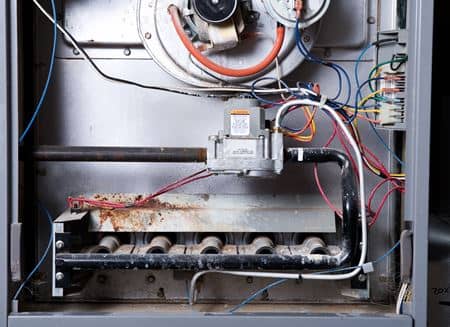Is Your Furnace on Its Last Legs? Signs You Need a Replacement

Your furnace is the heart of your home's heating system, keeping you cozy and warm during the cold winter months. But like any appliance, it has a limited lifespan. Knowing when to replace your furnace can save you money, stress, and potential hazards down the road.
Here are some telltale signs that it might be time to bid farewell to your old furnace and invest in a new one:
1. Your Furnace is Ancient:
- Age Matters: The average lifespan of a furnace is 15-20 years. If yours is approaching or exceeding that age, it's likely nearing the end of its reliable service.
- Decreased Efficiency: Older furnaces lose efficiency over time, leading to higher energy bills and uneven heating.
2. Skyrocketing Energy Bills:
- Sudden Spikes: If you notice a significant increase in your heating bills without a change in usage, it could indicate your furnace is working harder to produce the same amount of heat.
- Inefficient Operation: Older furnaces often struggle to heat your home effectively, leading to longer run times and higher energy consumption.
3. Frequent Repairs and Breakdowns:
- Recurring Issues: If you're constantly calling for repairs, it's a sign your furnace is becoming unreliable. Repeated repairs can be costly and inconvenient.
- Major Component Failures: Replacing major components like the heat exchanger can be expensive, sometimes approaching the cost of a new furnace.
4. Uneven Heating or Cold Spots:
- Inconsistent Temperatures: If some rooms are too hot while others are too cold, it could indicate a problem with your furnace's airflow or distribution.
- Ductwork Issues: While this could be a ductwork issue, an aging furnace may struggle to maintain consistent temperatures throughout your home.
5. Strange Noises:
- Rattling, Banging, or Screeching: Unusual noises coming from your furnace can be a sign of worn-out parts, loose components, or other problems that require attention.
- Ignoring the Sounds: Don't ignore these noises! They could indicate serious issues that can worsen if left unaddressed.
6. Visible Signs of Wear and Tear:
- Rust and Cracks: Corrosion on the furnace or cracks in the heat exchanger can be dangerous and indicate a potential safety hazard.
- Moisture or Soot: Excess moisture around the furnace or soot buildup can be signs of improper combustion.
7. Poor Indoor Air Quality:
- Dust and Debris: An old furnace can circulate dust, allergens, and other pollutants throughout your home, affecting your indoor air quality.
- Dry Air: Older furnaces can contribute to dry air, leading to discomfort and potential health issues.
8. Carbon Monoxide Concerns:
- Safety First: A cracked heat exchanger can leak carbon monoxide, a colorless and odorless gas that can be deadly.
- CO Detectors: Ensure you have working carbon monoxide detectors installed in your home.
Considering a Replacement?
If you notice any of these signs, it's time to consider a furnace replacement. A new, high-efficiency furnace can provide:
- Lower energy bills: Save money on heating costs with improved efficiency.
- Increased comfort: Enjoy consistent temperatures and better indoor air quality.
- Enhanced safety: Reduce the risk of carbon monoxide leaks and other hazards.
- Peace of mind: Enjoy the reliability and peace of mind that comes with a new furnace.
Contact McVehil Today!
Our team of experts can help you assess your furnace's condition and recommend the best course of action. We offer a wide selection of high-quality, energy-efficient furnaces to meet your needs and budget.

Request a Quote and Experience the McVehil Difference! Contact Our Local Plumbers and Heating and Cooling Experts Today!